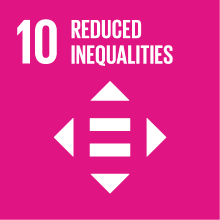HISTORY OF EASTERN EUROPE MOD. 2
- Academic year
- 2018/2019 Syllabus of previous years
- Official course title
- STORIA DELL'EUROPA ORIENTALE MOD. 2
- Course code
- LM1510 (AF:254874 AR:157294)
- Modality
- ECTS credits
- 6
- Degree level
- Master's Degree Programme (DM270)
- Educational sector code
- M-STO/03
- Period
- 1st Semester
- Course year
- 2
- Moodle
- Go to Moodle page
Contribution of the course to the overall degree programme goals
Expected learning outcomes
The expected learning results are the following:
- to familiarize with and to be able to understand the historical development of prostitution policies in pre- and post-revolutionary Russia, as well as the medical, criminological and literary debates which influenced those processes
- to introduce the Russian case in a comparative international context
- to become acquainted with the most recent historiographical debate around notions like “prostitution”, “sex work”, “sexual barter”
- to be able to apply this knowledge to a critical understanding of the present time
- to refine your communication skills
Pre-requirements
Contents
Referral texts
Laurie Bernstein, Sonia’s Daughters: Prostitutes and Their Regulation in Imperial Russia, Berkeley, University of California Press, 1995: introduction, chapters 1, 4, 5. [on-line access through the library catalogue of Ca’ Foscari]
Sharon A. Kowalsky, Deviant Women: Female Crime and Criminology in Revolutionary Russia, 1880-1930. DeKalb, IL: Northern Illinois University Press, 2009: introduction, chapters 1, 3.
group B: one text among the following
Keely Stauter-Halsted, The Devil's Chain: Prostitution and Social Control in Partitioned Poland, Ithaca: Cornell University Press, 2015 (Introduction and Ch. 1)
Nancy M. Wingfield, The World of Prostitution in Late Imperial Austria, Oxford, Oxford University Press, 2017 (Introduction and Ch. 1).
Stefano Petrungaro, “The Medical Debate about Prostitution and Venereal Diseases in Yugoslavia (1918–1941)”, Social History of Medicine, Published: 01 August 2017, hkx023, https://doi.org/10.1093/shm/hkx023
Furthermore, for students not attending classes:
Marie-Louise Janssen, Prostitution, in: Gert Hekma (ed.), A Cultural History of Sexuality in the Modern Age, Oxford-New York, Berg, 2011, 177-202.
Judith R. Walkowitz, Sessualità pericolose, in: George Duby e Michelle Perrot (a cura di), Storia delle donne in Occidente, vol. 4: L'Ottocento, a cura di Geneviève Fraisse e Michelle Perrot, Bari, Laterza, 1991, 405-440.
Timothy J. Gilfoyle, "Prostitutes in History. From Parables of Pornography to Metaphors of Modernity", American Historical Review, 1999, 104, 1, 117-41.
Marius Turda, Paul J. Weindling, eds, Blood and Homeland. Eugenics and Racial Nationalism in Central and Southeast Europe, 1900-1940, Budapest, Central European University Press, 2007, 1-20.
Anna Hájková, "Sexual Barter in Times of Genocide: Negotiating the Sexual Economy of the Theresienstadt Ghetto", Signs, Vol. 38, No. 3 (Spring 2013), 503-533.
Mary Spongberg, Feminizing Venereal Disease. The Body of the Prostitute in Nineteenth-Century Medical Discourse, New York, New York University Press, 1997, 19-38.
It is recommended to everyone, and particularly to students who do not attend classes, to consult the materials - ie. some of the texts in the bibliography, as well as historical maps, visual sources, integrative texts, useful links etc. - published on the moodle platform (https://moodle.unive.it/ ).
NB: Texts which are not available in the libraries of Ca’ Foscari will be put at disposal by the teacher on the moodle platform.
Assessment methods
1) to verifying the knowledge of the main historical facts and processes, as well as the most relevant personalities, with relation to prostitution during the Tsarist and Soviet period
2) to verify the analytical skills and the ability of the student to formulate critical reflections about the historiographical issues emerged during the lessons
3) to verify the knowledge of some elements of historical comparison in the framework of the East-Central and South-East European space.
The examination is written (duration: 1½ hours) and one further goal is to verify the written communicative skills of the student.
Teaching methods
Teaching language
Type of exam
2030 Agenda for Sustainable Development Goals
This subject deals with topics related to the macro-area "Poverty and inequalities" and contributes to the achievement of one or more goals of U. N. Agenda for Sustainable Development




